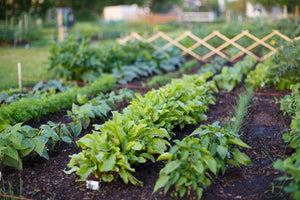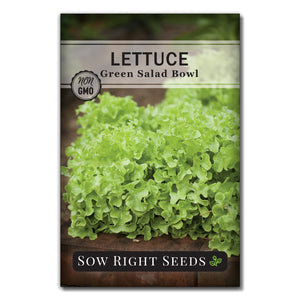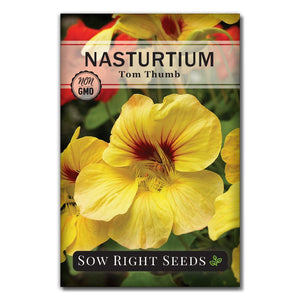Say Goodbye to Leggy Seedlings: 5 Things to Check
Starting seedsIf you’ve ever started growing from seed, you know how exciting it is to see those first sprouts push through the soil. You cheer them on as they stretch for the light. But wait a minute. Why are they so tall? And why did they fall over and die?
That’s the problem with leggy seedlings. Those delicate and desperately sprouting seeds are more fragile than a newborn giraffe on ice.

Identifying Leggy Seedlings
What are leggy seedlings? The stems of leggy seedlings are typically pale and fragile. These unhealthy seedlings have long, thin stems without much leaf growth.
Healthy seedlings will be more sturdy with a deeper green color and bigger leaf development. Leggy seedlings are a sign that something isn’t right. The plants aren’t getting what they need for healthy growth.

How to Prevent Leggy Seedlings
How can you prevent your tender seedlings from becoming leggy? It starts with giving your seeds what they need. When you begin with the correct spacing and sufficient light, your seedlings will start to grow.
We’ll guide you through the essentials of light, heat, water, and spacing to start your seeds on solid footing.
Seed Spacing
Preventing leggy seedlings can start the moment you plant your seeds. When too many seeds are close together, they will compete with each other for light and nutrients. This can cause them to elongate as they try to beat out the other sprouts.
Although it can be hard to do with tiny seeds like celery, strawberry, and coleus, it is important to space seeds far enough apart to give them room for sprouting and growth.
Don’t wait too long before thinning your seedlings. If necessary, cut extra seedlings out so that you only have one or two plants per cell.

Light for Seedlings
Insufficient light is the number one reason for leggy seedlings. Light is crucial for plant development.
I’ve had okay success starting seeds in various locations. Windowsills and tables with lots of natural light are often sufficient. But sometimes, those seedlings become leggy and don’t transplant well.
Once I understood the basics of starting seeds indoors and invested in grow lights, I had much healthier seedlings, and it was a game changer for me. I was transplanting out a lot more seedlings that continued to flourish.
A seed will naturally soak in as much light as possible. And if it can't get enough, it will stretch further.
- Have your grow lights ready when you plant your seeds. Some seeds, such as coleus and celery, need light to germinate, so you will need grow lights from the moment you plant the seeds.
- Place your light source close to your seeds. Grow lights can be placed 2 to 3 inches away from the seeds.
- For all other seeds, you can wait until they first break through the soil. But if you don’t want to miss that crucial timing, you can place lights above the seeds a few days after planting. As long as you’ve planted your seeds deep enough, even those that need darkness for germination, such as calendula, will still germinate. Even seeds germinating in the dark will seek light as soon as they sprout.
Temperature for Seedlings
Warm temperatures are needed for some seeds to germinate. But for some seeds, warm temperatures can result in a growth spurt that creates thin stems. Check the germination temperature on your seed packet or use our Temperature Germination Chart.
With seeds such as broccoli, the soil temperature can be decreased once the seeds have sprouted. Keep the soil temperature on the lower end of the optimal range for slower growth. This will help the plant stay in its “early spring” mode and not try to grow so fast.

Watering Seedlings
Consistently moist but not waterlogged is best for growing seedlings. Once the seeds have sprouted, water from the bottom to encourage root growth.
Air Flow for Seedlings
Indoors, you can give your seedlings a very gentle breeze to encourage sturdier growth. It doesn’t take much to give them some movement. You don’t want to blow them over—just enough air movement for them to respond with stronger stems.
Leggy Seedlings vs Normal Seedlings

The tomato seedlings on the left didn't have a grow light above them. Notice the cotyledons on the very thin stems.
The tomato seedlings on the right were placed under a grow light from the time the seeds were planted.
How to Fix Leggy Seedlings
Is it possible to fix leggy seedlings? That depends.
Two questions to ask are:
What stage is it in?
What is the plant?
If the seeds don’t have true leaves yet and they’re already stretched too thin, you’re better off replanting. Take note of these tips and start new seeds. You’ll end up with healthier plants instead of trying to nurse the doomed plants.
The ability to fix leggy seedlings depends on what plants you are growing.
Tomatoes are one of the easiest leggy seedlings to fix. If the seedlings have several sets of true leaves, they can be potted up.
But many other plants need to only be planted to the depth that they are currently growing.
Sometimes these can still be saved if they are given enough light.

If your seedlings look thin and desperate, it’s time to take action. You can lower the temperature, increase the light, water appropriately, and thin them out. If you’re just getting started, use these tips to prevent leggy seedlings and get your plants off to a healthy start. Then, they’ll be strong for their transition into the outdoor garden.
For more seed-starting tips, check out our Planter’s Library.
Written by Beverly Laudie








Minnie – That’s a great idea to print a book! For now “How to Start Seeds Indoors: The Complete Guide” is just on our website. You can click the link and read more about starting seeds indoors. Hope this helps.
seedlings growing indoors
How to Start Seeds Indoors: The Complete Guide
Just want to know it this a book that can be purchase and what the cost? Can you obtain at a store .
Leave a comment